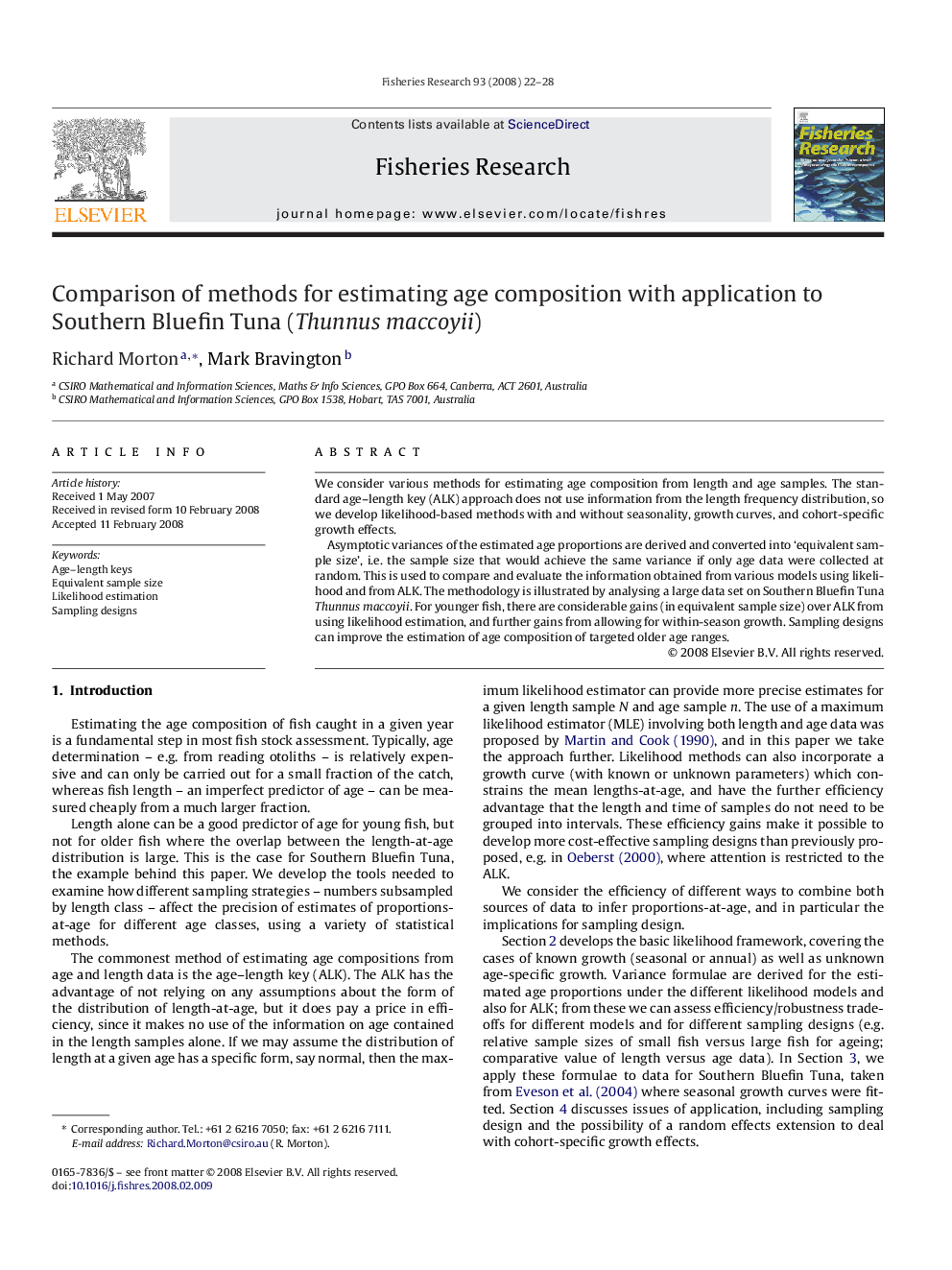| Article ID | Journal | Published Year | Pages | File Type |
|---|---|---|---|---|
| 4544271 | Fisheries Research | 2008 | 7 Pages |
We consider various methods for estimating age composition from length and age samples. The standard age–length key (ALK) approach does not use information from the length frequency distribution, so we develop likelihood-based methods with and without seasonality, growth curves, and cohort-specific growth effects.Asymptotic variances of the estimated age proportions are derived and converted into ‘equivalent sample size’, i.e. the sample size that would achieve the same variance if only age data were collected at random. This is used to compare and evaluate the information obtained from various models using likelihood and from ALK. The methodology is illustrated by analysing a large data set on Southern Bluefin Tuna Thunnus maccoyii. For younger fish, there are considerable gains (in equivalent sample size) over ALK from using likelihood estimation, and further gains from allowing for within-season growth. Sampling designs can improve the estimation of age composition of targeted older age ranges.
